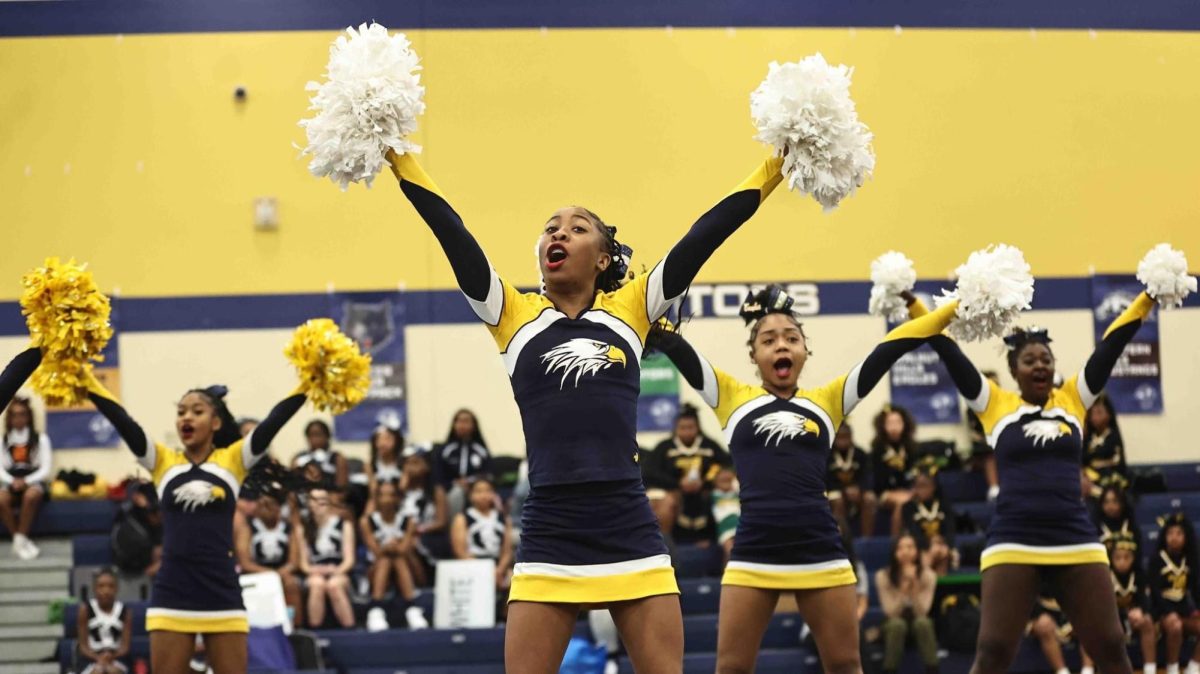“An institutionalized activity involving physical exertion with the primary purpose being competition versus other teams or individuals within a collegiate competition structure.” This is how the National Collegiate Athletic Association defines a sport. Though many argue dance and cheerleading fit under the category, skeptics refuse to acknowledge its eligibility.
On Jan. 12, collegiate cheer and dance teams came from all across the United States to compete at the United Cheer Association and United Dance Association nationals at the ESPN Wide World of Sports Complex at the Walt Disney World Resort. Collegiate competitive cheer and dance teams train year-round for this event and put forth their greatest effort for the chance to win the title of National Champion.
“I think cheer is one of the hardest sports,” competitive cheerleader for Stingrays Allstar Blaire Glover, ‘28, said. “You get hurt a lot, so I think we should get more credit, and I think it should be [considered] a sport by the NCAA.”
Prominent dance teams at colleges often go viral for their performances at UDA nationals, such as the University of Minnesota, whose performance received accolades from New York Governor Tim Walz, and Ohio State University. Due to the increased traction on social media for this team and many others, the issue of dance and cheerleading not being considered sanctioned sports by the NCAA has been pushed to the forefront.
“I think it’s kind of crazy, seeing as [cheer and dance] bring in a lot of trophies,” JV cheer captain Kayla Mitchell, ‘26, said. “It’s sort of considered an Olympic sport, so why is it not considered a sport by the NCAA?”
Although breaking (also known as breakdancing) made its Olympic debut at the Youth Olympic Games in Buenos Aires in 2018 and has been listed to make an appearance in the 2024 Paris Olympics, skeptics continue to denounce dance as a sport.
“A lot of people don’t take dance seriously,” WHHS dance team co-captain Aabha Phadke, ‘24, said. “It’s always considered an art form, but never a sport.”
Some argue that due to the fact that dance is regarded as an art form it therefore also can not be a sport. However, others argue that being an art form does not make it any less of a sport because performance and creativity are not inherently un-sports-like.
“It takes an athlete to do it. It’s just as hard as running around, you still need stamina,” Cincinnati Ballet dancer Claire Lefever, ‘27, said. “It’s an art form, but it doesn’t mean it’s not hard.”
It comes down to this: what makes a sport a sport? The word “sport” in itself does not exclude art forms from being deemed as such, but these are the confines society has built around the industry. But why? It can all be traced back to the history of gender inequality in sports.
“I feel that we put in a lot of effort, and sometimes, it seems like people are underestimating our sport,” varsity cheerleader Tazara Prophett, ‘26, said.
Since dance and cheerleading are not considered to be typical “masculine” activities, these athletes have to deal with a lot of prejudice and inaccurate preconceived notions about their sport.
“I feel like people don’t know everything about cheer,” Glover said. “[People] get confused about it and think ‘Oh you’re cheering on the sidelines.’ I don’t think they know that it’s more than that, so they have this perspective on it. I just try to tell them that there’s more to it than what they think.”
Misogyny and sexism in sports are not just confined to dance and cheerleading; they can be seen all over the sports world today.
For example, the professional basketball league for men is referred to as the National Basketball Association (NBA), whereas the league for women is referred to as the Women’s National Basketball Association (WNBA). It is the little things like this that make all the difference when it comes to gender equality in sports.
Women’s sports are often only given the title of “real sports” because they are typically just the female version of their male counterparts, but since dance and cheerleading are predominantly female sports, they don’t get the same luxury.
“Cheerleaders put time and effort to cheer,” Glover said. “[We’ve] done everything that normal sports like basketball [and] football [have done]. We condition and we practice, so I feel like it should be considered a sport.”
Ultimately, all sports deserve acknowledgment and recognition- no matter how big or small. So regardless of what activity someone does: dance, cheerleading, football, baseball, tennis, gymnastics or wrestling. They should all get the appreciation they deserve.
“We do as much as the next person would do,” Mitchell said. “We put our time into it, we compete against other teams, we have to go to the gym to condition. We do the same thing as any other sports player would do.”



